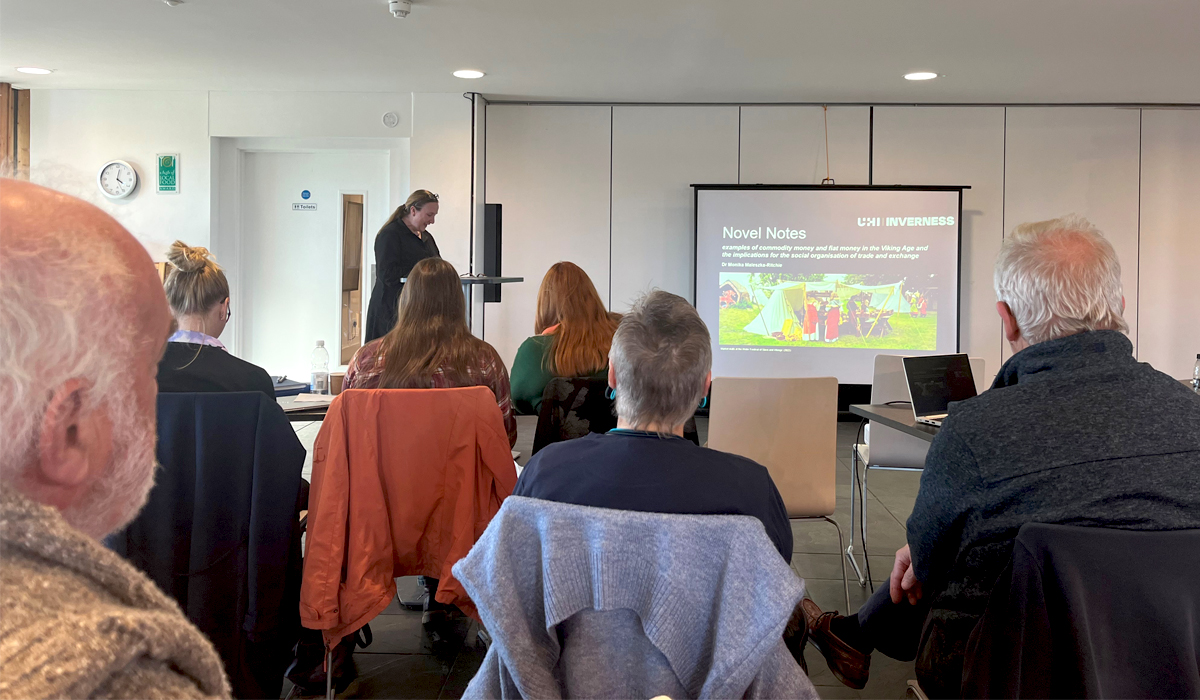Over the Sea to Skye
Earlier this month Dr Monika Maleszka-Ritchie, Research Development Facilitator at our Institute for Biodiversity and Freshwater Conservation, presented a paper at the Norse and the Sea conference organised by the Institute for Northern Studies.
Monika’s paper explored the archaeological and historical evidence for the development of ‘commodity money’ and ‘fiat money’ in the Viking Age early medieval marketplaces of Eastern Europe. The flat axe-like iron bars known as grzywna of iron from Poland and Czechia, and similar axe-like iron bars known as vevjern from Southern Norway, were discussed as examples of standardised commodity money. The animal pelts known as plomby from Eastern Slavonic regions and the territory of the Volga Bulgars were highlighted as examples of fiat money.
Held as part of the Norse and the Sea: The Maritime Cultural Landscape of Scandinavian Scotland project, the conference gathered specialists in the field of Scandinavian Scotland (c. AD 790-1350) and beyond.
